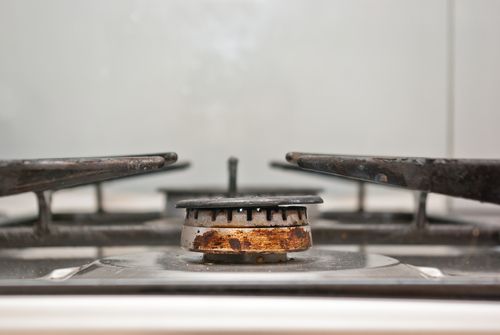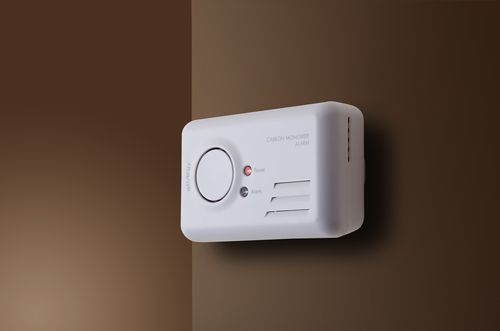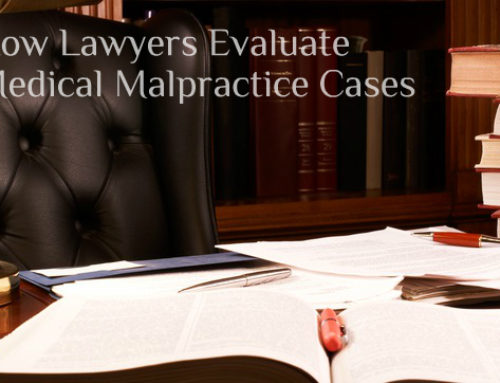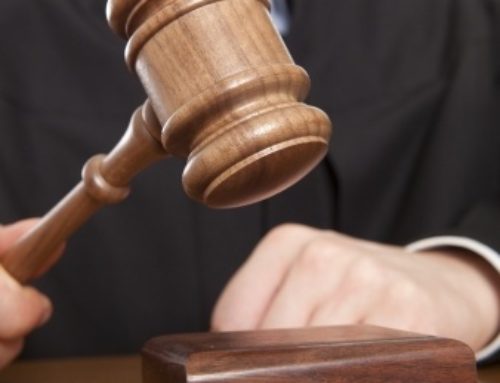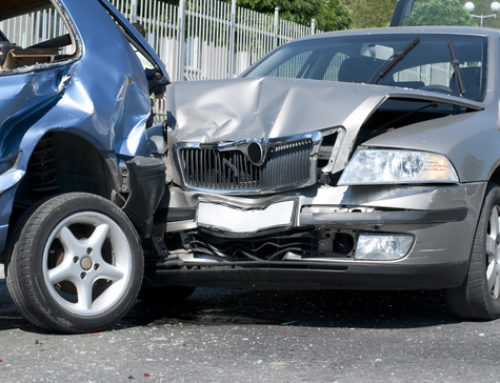Have you ever wondered if you’ve had carbon monoxide poisoning? This post will give you the essentials about carbon monoxide, including how you can get carbon monoxide poisoning, carbon monoxide symptoms, and what you can do about this potentially fatal threat.
What Is Carbon Monoxide?
Carbon monoxide is a molecule, often referred to by its chemical formula CO. It is an odorless gas, without color, and a byproduct of combustion. Combustion is the reaction of a fuel source (gasoline, wood, propane, charcoal, etc.) with heat and oxygen to produce energy, such as in your fireplace, your furnace, or your car’s engine.
How Do People Get Carbon Monoxide Poisoning?
The lethal danger of carbon monoxide is that it binds preferentially with hemoglobin in the human bloodstream. Normally, the hemoglobin in your red blood cells carries the oxygen you breathe throughout the body to help it perform normal functions. However, when carbon monoxide bumps oxygen out of the way to stow away on that hemoglobin, no oxygen reaches your vital organs, and a string of deadly consequences can result (see below).
People get carbon monoxide poisoning by accidentally inhaling CO in their living or working environment. They can also inhale carbon monoxide when there is a CO leak to the interior of a motor vehicle and the windows are shut, preventing fresh air from cycling in. Sometimes, sitting in a parked car with the engine idling can cause the occupants of the vehicle to breathe in carbon monoxide.
Common sources of carbon monoxide that can poison the air you breathe include:
- Motor vehicles, including boats
- Furnaces and heaters
- Gas ranges and stoves
- Grills
- Lanterns
- Fireplaces
- Small engines, like lawnmowers, chainsaws, and snowblowers
When carbon monoxide from these sources is in a closed environment, oxygen gets choked out and people start to inhale CO instead. This typically happens during the winter, when people don’t have any windows open and doors are sealed tight against the cold.
According to the CDC (Centers for Disease Control), more than 400 Americans die each year from non-fire related carbon monoxide poisoning. Nearly all of these deaths could have been prevented (see below). Another 20,000 people are treated annually in the ER for CO poisoning, with one-fifth of them being admitted to the hospital.
Some people are already oxygen-challenged to begin with. These people are particularly susceptible to carbon monoxide poisoning:
- The elderly
- Unborn babies
- Newborns and infants
- People with heart disease
- Those with respiratory disease (breathing problems), including smokers
- People with anemia
Furthermore, people who are sleeping or intoxicated are more likely to be victims of carbon monoxide poisoning because they don’t notice the onset of symptoms (next section).
What Are Carbon Monoxide Symptoms?
Carbon monoxide poisoning comes on insidiously so many victims don’t realize what’s going on. Some victims describe carbon monoxide poisoning as similar to coming down with a bad cold or the flu. Watch out for these symptoms, which could indicate you have inhaled excess amounts of carbon monoxide:
- Dull, overall headache
- Dizziness
- Nausea
- Vomiting
- Weakness
- Shortness of breath
- Blurred vision
- Confusion
- Loss of nervous system function
- Loss of consciousness
If left untreated, carbon monoxide poisoning can cause brain damage and ultimately, death.
If you are experiencing the symptoms above, go outside where you can breathe fresh air right away and call 911. You should not try to drive yourself to the ER or the doctor’s office because you may lose consciousness on the way there.
How Is Carbon Monoxide Poisoning Treated?
There are two things emergency medical personnel or firefighters will do right away when treating someone with CO poisoning:
- Remove them from the potentially deadly environment
- Administer oxygen via nasal cannula or mask
Pulse oximetry, which measures blood hemoglobin and is typically used to gauge how much oxygen one is breathing, is useless, since carbon monoxide binds with hemoglobin too, even better than oxygen. A pulse oximeter reading with carbon monoxide poisoning will look like you have plenty of oxygen circulating when really you have CO attached to your red blood cells.
In the hospital, doctors will run a blood test to check for carbon monoxide poisoning if a patient presents with the symptoms of CO poisoning or has been in a high-risk environment. They will ask about the patient’s other medical issues in case those conditions could complicate CO poisoning.
In some instances, a hyperbaric chamber may be used for treatment. This is a special room where the air is pressurized at a rate two or three times greater than normal. This helps move oxygen into the lungs faster to restore normal bodily functions and can prevent heart problems, brain damage, or injury to an unborn child in patients with CO poisoning.
What Can You Do to Prevent Carbon Monoxide Poisoning?
There are actions you can take to reduce the risk of carbon monoxide poisoning in your environment, whether at home, at work, or at other places you frequent. If you rent your home or if your place of work puts you at risk for carbon monoxide poisoning, your landlord or employer should take these steps.
Home, Workplace, Lodging, and Other Places You Frequent
Use a Carbon Monoxide Detector
Placing at least one carbon monoxide detector in your home or workplace is one of the best ways to know if the air you’re breathing is unsafe. Hotels, schools, and recreational facilities should have CO detectors as well.
Like smoke detectors, these devices sound an alarm if the CO content of the air around you reaches unsafe levels. Many have digital displays that show the concentration of carbon monoxide in the air. Be sure to replace the batteries regularly in your CO detector. If you’ve had your carbon monoxide detector for more than five years, it’s probably best to replace it with a new one.
Every state is different regarding the requirements for CO detectors in homes, workplaces, lodging, and schools. They should be distributed like smoke alarms, with one for each floor and each separate sleeping area.
Service Your Furnace and Water Heater Regularly
Home furnaces and water heaters are a major source of carbon monoxide poisoning, usually from poorly vented fuel sources or leaking vent pipes. Ideally, you should have your furnace and water heater inspected by a professional at least once a year.
Vent Gas Appliances Properly
Gas appliances in your home or workplace need to be properly vented to prevent the escape of carbon monoxide into interior environments. Remember, carbon monoxide is produced as a result of combustion, which occurs with gas furnaces, water heaters, and stoves. When you have your appliances professionally inspected at the start of each fall or at the end of the winter, ask the inspector to check the vents too.
Check Your Chimney and Use Your Fireplace Correctly
Your fireplace and chimney can be additional sources of carbon monoxide. Before each fire burning season, have your chimney and fireplace checked by a chimney professional. They will make sure the system is vented properly to the exterior of your house so no carbon monoxide blows back into the home’s interior. Always make certain the flue is open on your chimney before starting a fire.
Do Not Grill Indoors
Never use a propane, charcoal, or wood barbecue indoors when it is designed and tested for outdoor use. Grills are notorious for producing high amounts of carbon monoxide, which you don’t notice outside but which accumulates to fatal amounts quickly indoors.
Only Use Portable Camp Stoves or Flameless Heaters Outdoors
Likewise, other small appliances and devices, like portable gas camp stoves or flameless heaters, should only be used outdoors.
Do Not Perform DIY Patches on Vent Pipes
It may be tempting to save money by repairing a vent pipe yourself, especially if you have an emergency at an inconvenient time. But these pipes, such as the ones from your furnace or hot water boiler, need to be repaired by a professional at all times. If you are a new tenant and suspect a vent pipe is leaking, notify the landlord immediately; it is their responsibility to make the repairs.
Never Heat Your Home with Your Stove or Oven
Don’t ever heat your home with your range or oven to save a few dollars on your electricity or larger heating system. Running these gas appliances continually for hours when not cooking can produce high amounts of carbon monoxide. Furthermore, the flame could go out when you are asleep, leaving deadly gas pouring into the air you breathe.
Do Not Use a Generator Inside
If you need to use a power generator for repairs or during a utility outage, never use it inside your workplace or home, including inside the garage. If you must use a generator, keep it at least 20 feet from any structure’s windows, doors, and vents.
Purchase Appropriately Certified Gas Appliances and Equipment
When you buy new appliances, like a hot water heater or stove, make sure they are certified for safety by a group like the Underwriters’ Laboratories.
Pay Attention to Gas Smells and Leaks
If you have gas leaking or an odd odor coming from an appliance, like a furnace or refrigerator, it could mean you also have carbon monoxide leaking into the environment (remember, CO is odorless). When in doubt, call a professional repair person, your landlord, your building management, or your local fire department.
Your Motor Vehicles
Have Regular Maintenance Performed on Your Motor Vehicle
Don’t forget that your motor vehicle can leak CO into its interior. Regular maintenance on the engine can help ensure all carbon monoxide, which is produced during combustion, is vented to the outside via the exhaust pipe.
Never Run Your Motor Vehicle Inside Your Garage or an Enclosed Space
Even if the garage door is open, you can inhale too much carbon monoxide by running your car inside your garage or similar enclosed space. If you need to run the engine while working on your vehicle, do it outside in a well-ventilated area.
Don’t Idle Your Vehicle With the Windows Closed
If you need to sit in park with your vehicle running, always open a few windows so you can breathe fresh air. Position the vehicle so exhaust from the rear isn’t blown into the windows.
Never Sleep in Your Vehicle with the Engine Running
Never, ever sleep in your vehicle while the engine is running. You could breathe carbon monoxide while you sleep without realizing it and never wake up again.
Open Your Vehicle’s Windows if You Drive with the Tailgate Open
If you drive with your vehicle’s tailgate open, also open your windows for a flow of fresh air. Otherwise, you could accidentally inhale carbon monoxide from the rear.
What Should You Do if You Have Carbon Monoxide Poisoning?
It can’t be stressed enough: if you think you are currently experiencing carbon monoxide poisoning, go outside immediately to breathe fresh hair and dial 911. An ambulance and fire engine will be dispatched to your location to give you necessary treatment and to prevent others from suffering the same fate. Make sure anyone else in your environment goes outside too, especially children.
If you suspect you have had an episode of carbon monoxide poisoning recently, make an appointment with your doctor or get a ride to your local emergency room, particularly if you are still having symptoms. It will be important to determine the source of the carbon monoxide, which could mean working with your local fire department or building inspectors to test your home or workplace.
In a situation where your landlord, employer, or a property owner is to blame for an episode of carbon monoxide poisoning, or if they refuse to take appropriate action to remediate the environment, you may need to seek legal counsel about a premises liability claim.
Property owners and municipalities are responsible for maintaining safe breathing environments in rental homes, schools, public buildings, offices, warehouses, hotels, and other places where people spend time indoors. Failure to do so could result in a lawsuit against them.
If you or someone you know has been a victim of carbon monoxide poisoning due to another party’s negligence, contact Ingerman and Horwitz today. We are attorneys experienced in premises liability cases, and we are experts on laws regarding carbon monoxide poisoning in Maryland. You or a loved one should never suffer because of someone else’s irresponsible actions.



